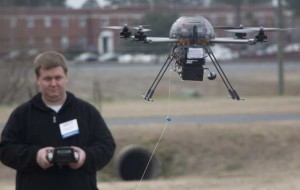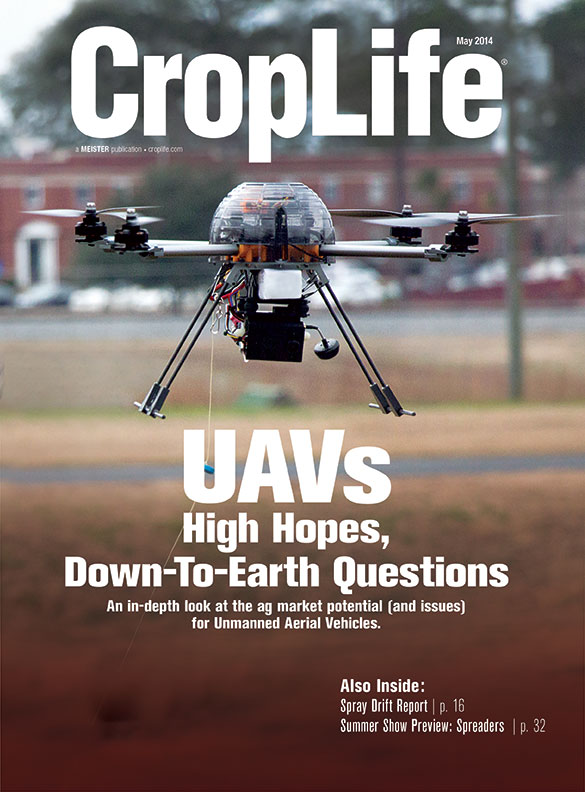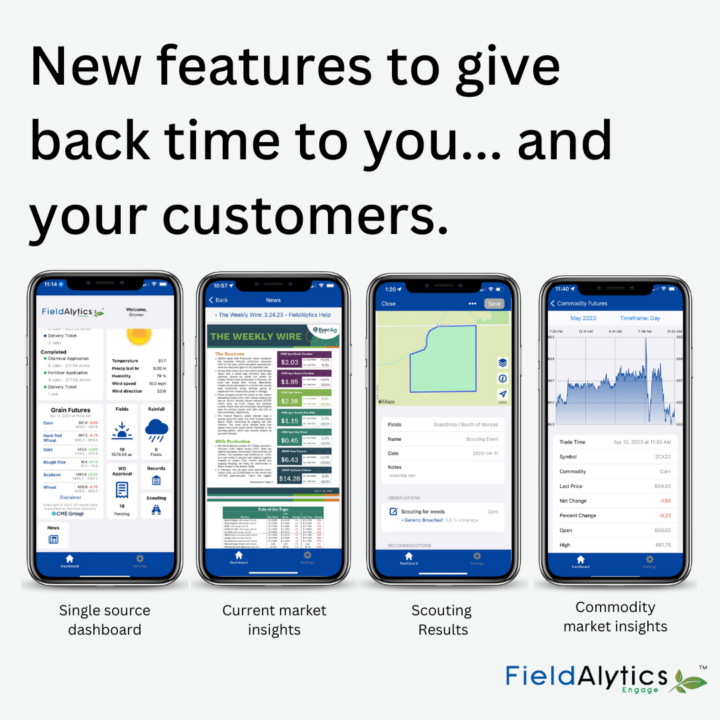UAS: The S Stands For Smart, Service And Sensors

UAVs are full-scale autonomous systems now — and their overall potential in agriculture is stratospheric.
Disruptive technology is a term coined by a Harvard business professor to describe “a new technology that unexpectedly displaces an established technology.”
For the purpose of agriculture, Unmanned Aerial Vehicles (UAVs) nearly qualify as such under that definition, although technically they will not be replacing a specific technology as much as they will be taking over crop scouting and monitoring duties from living, breathing human beings, whether by foot or by plane.
What’s more, these flying robots are now so sophisticated and so precise that we’re having to come up with new terms to refer to them by so as not to sell the intriguing technology short: what once were simply “drones” (Ugh!) have become “UAVs” and are now Unmanned Aerial Systems (UAS) — because they are a whole lot more than what started as mostly carbon-fiber flying frames with a GoPro Camera bolted on. They truly are full-scale autonomous systems now — and their overall potential is stratospheric.
“I think from the hardware side of it things are already pretty well-optimized (with the technology) across brands,” says Lia Reich, media relations, Precision Hawk. “Right now, there’s a huge discrepancy between different models and the level of data they are able to obtain and process in a timely manner.
“I mean, you can go out to the field and throw up a UAV every day and get mountains upon mountains of data, but if it’s not the right data — and quality data — or if you can’t process it efficiently and smartly, it’s not going to make as much of an impact as it should.”
A Smart UAV?
What Reich refers to is perhaps the next differentiating point in the ongoing UAS evolution: The UAV vs. the smart UAS.
“A smart UAS should be an almost completely hands-off system, everything monitored autonomously in-flight and it has to be able to calculate all of the varying conditions and factors in real-time,” explains Reich. “It has to have a healthy level of artificial intelligence built into the platform, and that’s going to ensure only good, useable data is captured.”
Reich’s employer, Precision Hawk, currently offers The Lancaster, its fixed-wing UAS platform, for crop consultants and agronomists. Still in research and development mode here in the U.S. as the Federal Aviation Adminstration (FAA) slogs towards its 2015 integration mandate, a little regulatory adversity hasn’t stopped Precision Hawk from learning as much as it can about its target audience — the retail agronomist.
“This platform lends itself perfectly to crop consulting,” says Reich. “We hear the same request from nearly every ag retailer we talk to, no matter the size, and its ‘operational tempo.’ There’s got to be an efficient end-to-end process with a quick turnaround. There can’t be a lot of uploading/downloading in the field, everything has to be autonomous. These guys typically are looking for a turnaround time between flights of under five minutes.”
Precision Hawk is also working on a central database, or online community, for processing UAS-captured data, reports Reich.
“Precision Hawk is working on creating a collective community where growers or independent crop consultants can exchange algorithms to be run on agronomic data,” she says. “The way we envision it right now is as an ‘analysis library,’ or almost like an app store, for these valuable algorithms.”

May 2014 Cover.
UAS As A Service
Now that we’ve looked at one of the many seemingly cutting-edge UAV manufacturers out there, questions still remain. Chiefly, what will the implementation of UAVs in large scale agriculture look like? How will all of this come together a year from now? While no one can say entirely for sure just yet, there are quite a few folks out there looking to answer that very question.
Vision Services Group (VSG) Unmanned, a UAS service provider founded in Atlanta, GA, in 2013, believes the most practical approach for many retail agronomy departments is going to be contracting with a third-party company such as itself, to provide UAS as a service.
“Unmanned technology will transform the precision agriculture movement,” said Ben Worley, chief operating officer, during his presentation at the now annual Association of Unmanned Vehicle Systems International (AUVSI) Atlanta conference.
“Expertise in this aspect of the agriculture industry will become essential, and companies who provide imaging and data management as a service will be particularly well suited to bring that expertise,” he says. “Every organization must look at the entire scope of the imagery acquisition and analysis process to determine the true cost and feasibility of maintaining an in-house aviation section vs. hiring an expert service provider.”
Not only that, says Worley, but there are other factors potential UAV technology adopters need to keep in mind as well.
“We have found in our use of UAVs overseas and in research, there are many challenges with UAS application,” he says. “First and foremost, I cannot overstate the need for preventative maintenance, and maintenance expertise enough, because you will crash your UAV. The question is, will you be able to fix it?”
As far as the benefits of engaging with VSG for your grower-customer’s aerial imaging needs, Worley says a team of fully-trained and licensed UAS experts will be more efficient, more accurate in the data they collect and more predictable.
“In an uncertain industry, working with an expert service provider creates some predictability around expenses,” he says. “There’s no unforeseen cost of repair, replacements or having to upgrade to the next model in a year.
“Not to mention, you get certified experts with thousands of hours of experience — and that experience means better data, better decisions. And you’ll never be tied down to just one platform; so you get the advantage of new technology without the cost of upgrading.”
High-Flying Sensors
As Worley stated at the beginning of his presentation, the end goal of applying UAS technology in agriculture is the acquisition and analysis of decision-enabling data. Further breakthroughs in the area of advanced sensor technology, by companies such as Swiss-based SenseFly, will be the means to an end in making that Worley’s goal a reality.
Enter SenseFly’s MultiSPEC 4C sensor, which is being offered as an add-on to the companies’ newest UAS model, the eBee Ag. SenseFly partnered with French outfit Airinov’s agronomy specialists on development of the sensor, which contains four separate 1.2 megapixel sensors electronically integrated within the eBee’s autopilot, providing image data over four highly precise light spectrum bands (Green, Red, Red Edge and Near-Infrared).
“What this sensor is measuring is the plant’s light reflectance,” says Xavier Jimenez, SenseFly R&D project manager. “What you want to see is a high level of reflectance in the near-infrared region — it’s something that is not visible to our naked eye so we don’t realize that healthy plants are actually quite bright in that spectrum.
“This region (of data) gives a lot of information on the density of the plant, its biomass, leaf area coverage, and overall health of the plant,” he concludes. “The greater the difference between near infrared reflectance and visible reflectance, the healthier the plants are.”
Along with the eBee, SenseFly’s Postflight Terra 3D is included for image analysis and mosaic building, as well as 3D terrain modeling.
“The idea with the agriculture application (of Postflight Terra 3D) is that we can add an additional tool to the suite, giving the user the ability to compute complex agronomic formulas based on the four band values, where typically you can only compute Normalized Difference Vegetation Index (NDVI),” says Jimenez.
SenseFly anticipates that MultiSPEC 4C will be available for purchase in June.






